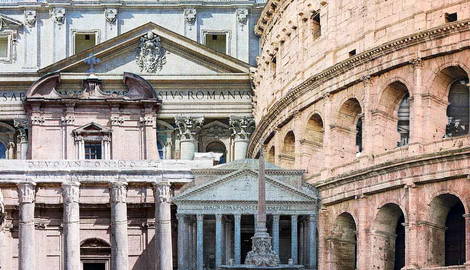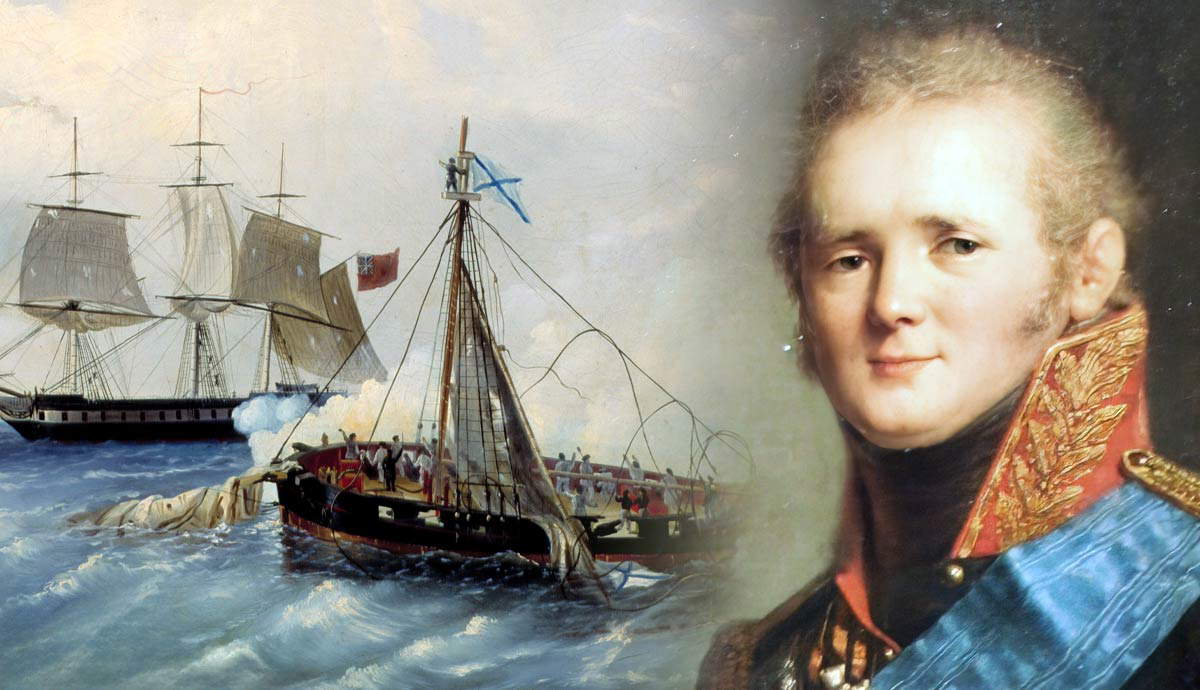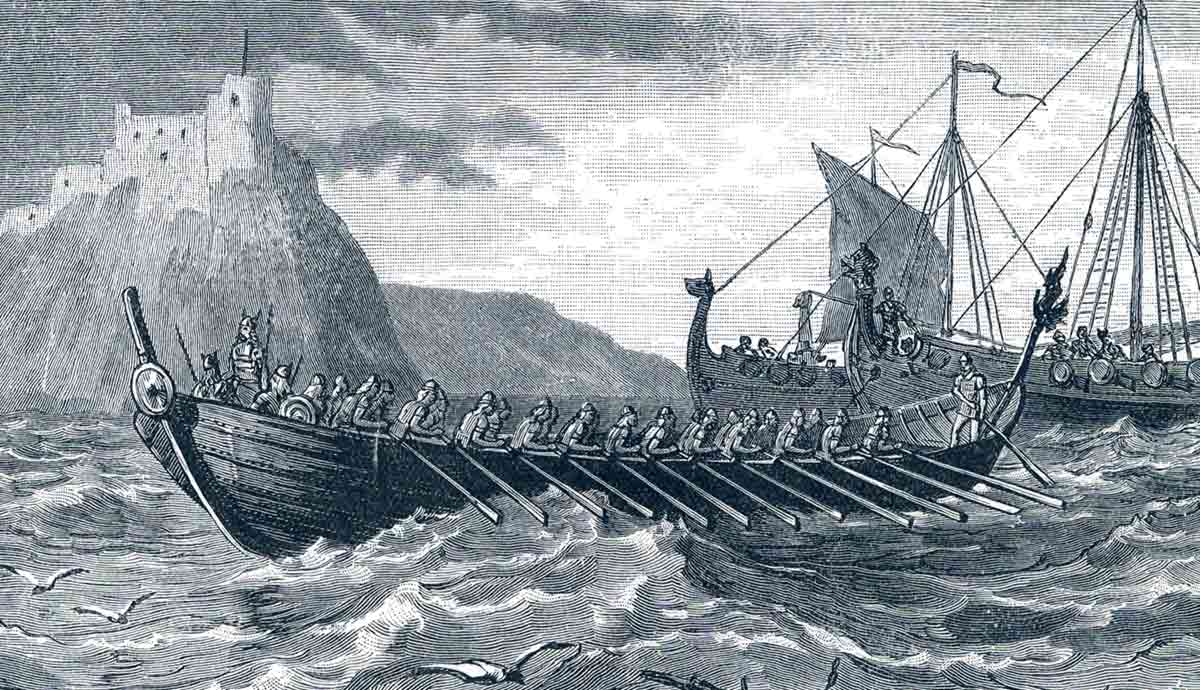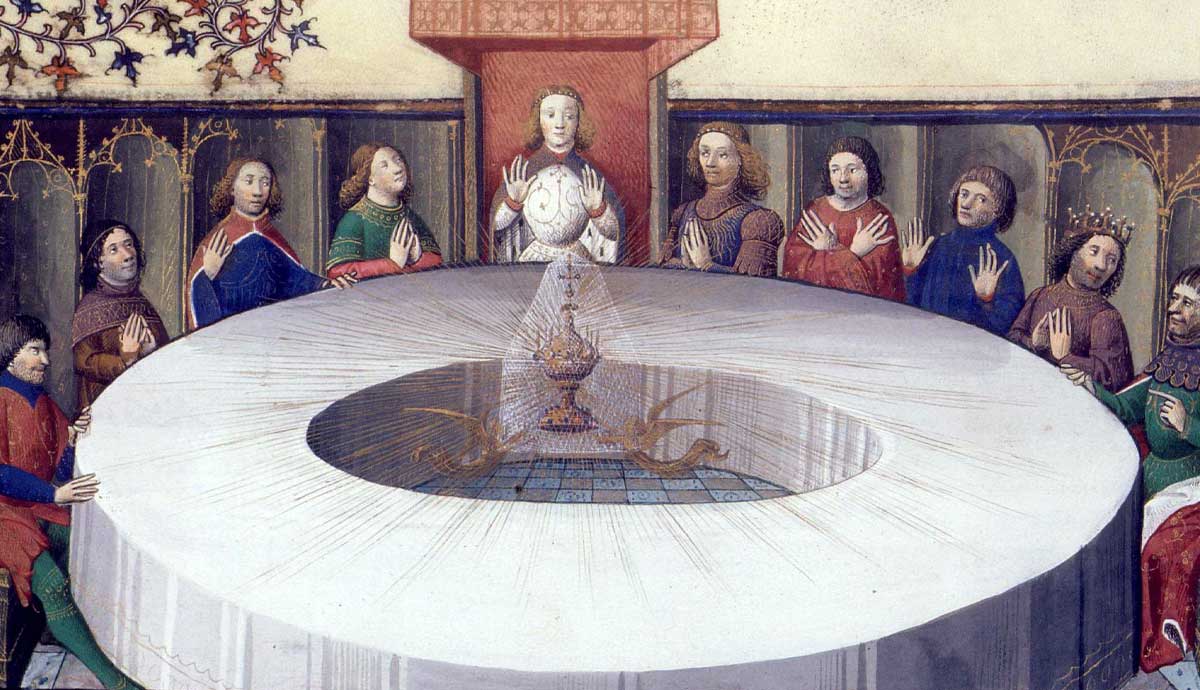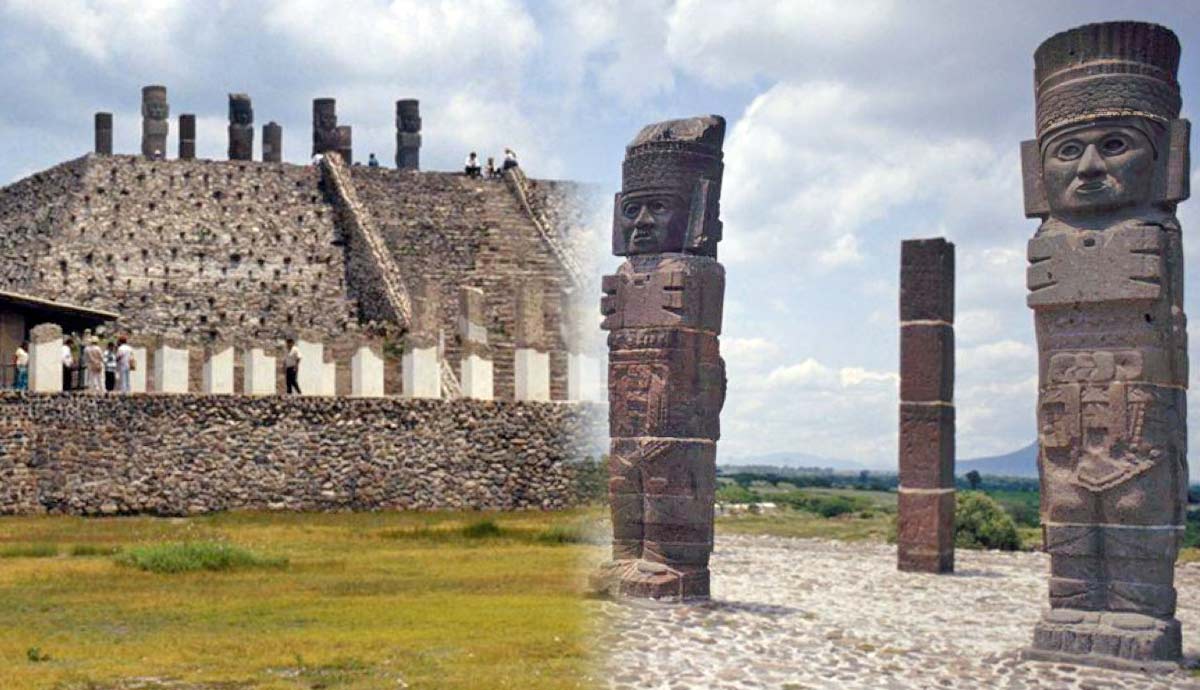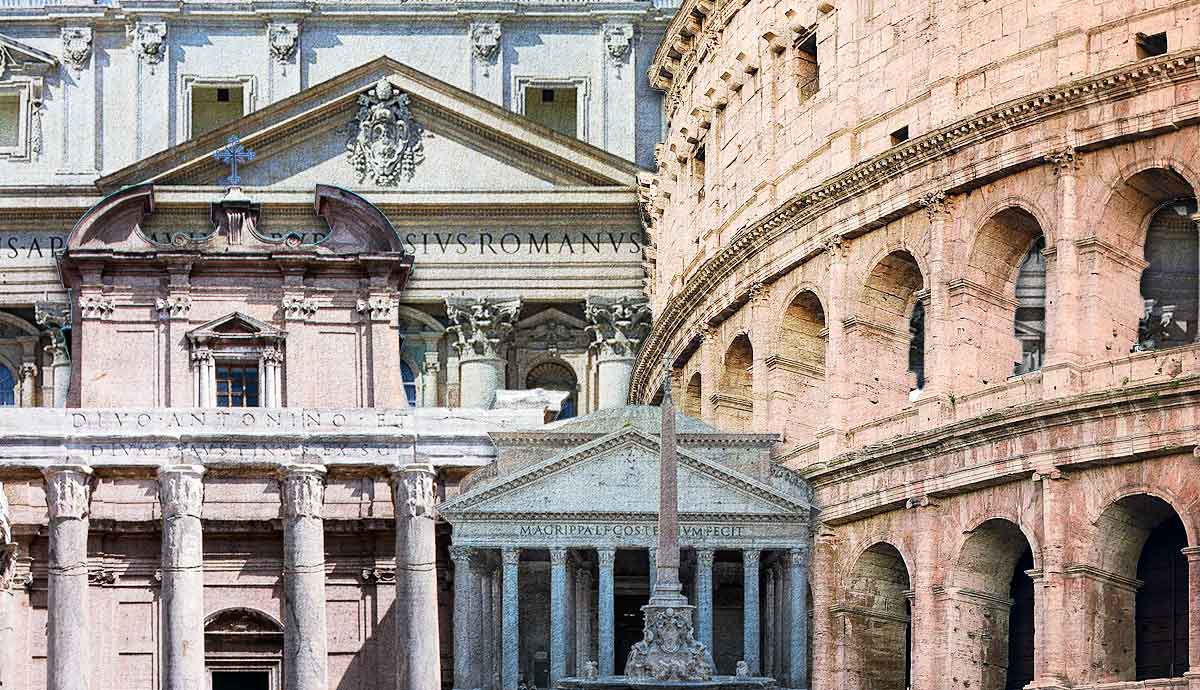
Rome is a city shrouded in myth yet full of potent physical reminders of many historical triumphs and tragedies. Walking the city’s streets today, it is easy to miss a trove of artistic and architectural gems from multiple historical eras tucked away down tiny alleys.
The city’s rich roster of significant monuments spanning historical ages from antiquity to modern times makes it difficult to focus on a shortlist. But here, we’ll explore 11 monuments that tell Rome’s history from its rise as a Mediterranean empire in antiquity to its current role as Italy’s capital city.
1. Rome’s Seven Hills
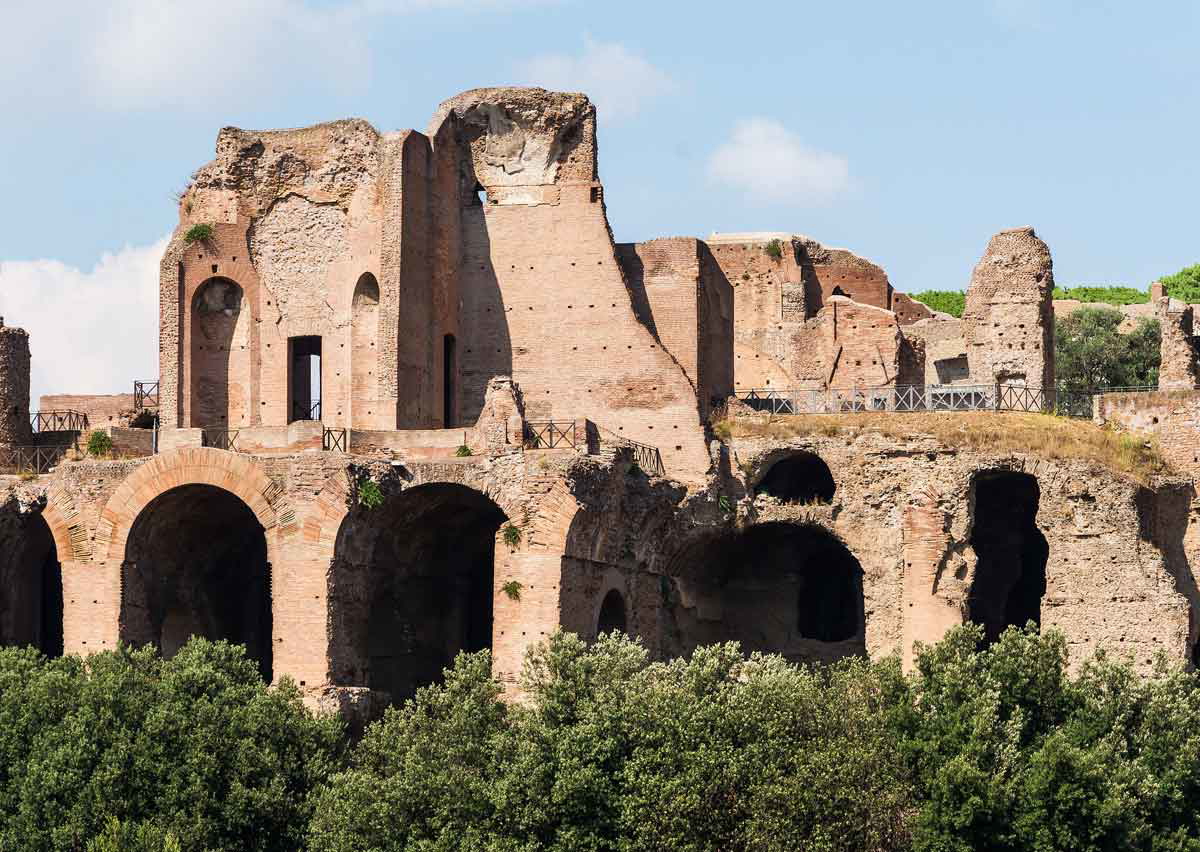
A mini geography lesson helps us understand Rome’s history and rise as a major power in the ancient world. Indeed, Rome’s history begins with its legendary seven hills: Palatine, Capitoline, Quirinal, Viminal, Esquiline, Caelian, and Aventine.
According to Roman mythology, these hills were the foundation upon which the city of Rome was built. For instance, historian David Gilmour points out the Palatine is the city’s mythological birthplace.
Over time, the Palatine became one of the city’s most prestigious neighborhoods. Indeed, it became the seat of Roman imperial palaces during the height of Imperial Rome. Today, you will find ruins like the stadio (stadium) and the Domus Flavia (imperial palace).
The nearby Capitoline is home to Rome’s city hall and the world-renowned Capitoline Museums.
While these fabled seven hills get the most attention, there are other important hills in Rome’s history—for example, the Janiculum. Historian R.J.B. Bosworth points out that the Janiculum was the site of intense fighting as Italian nationalist hero Giuseppe Garibaldi battled to defend the short-lived Roman Republic during Europe’s revolutions of 1848-49.
None of the proverbial seven hills rank as Rome’s highest point. While Monte Mario is Rome’s tallest hill, these fabled seven hills are packed with monuments and reminders of the city’s history.
2. Roman Forum
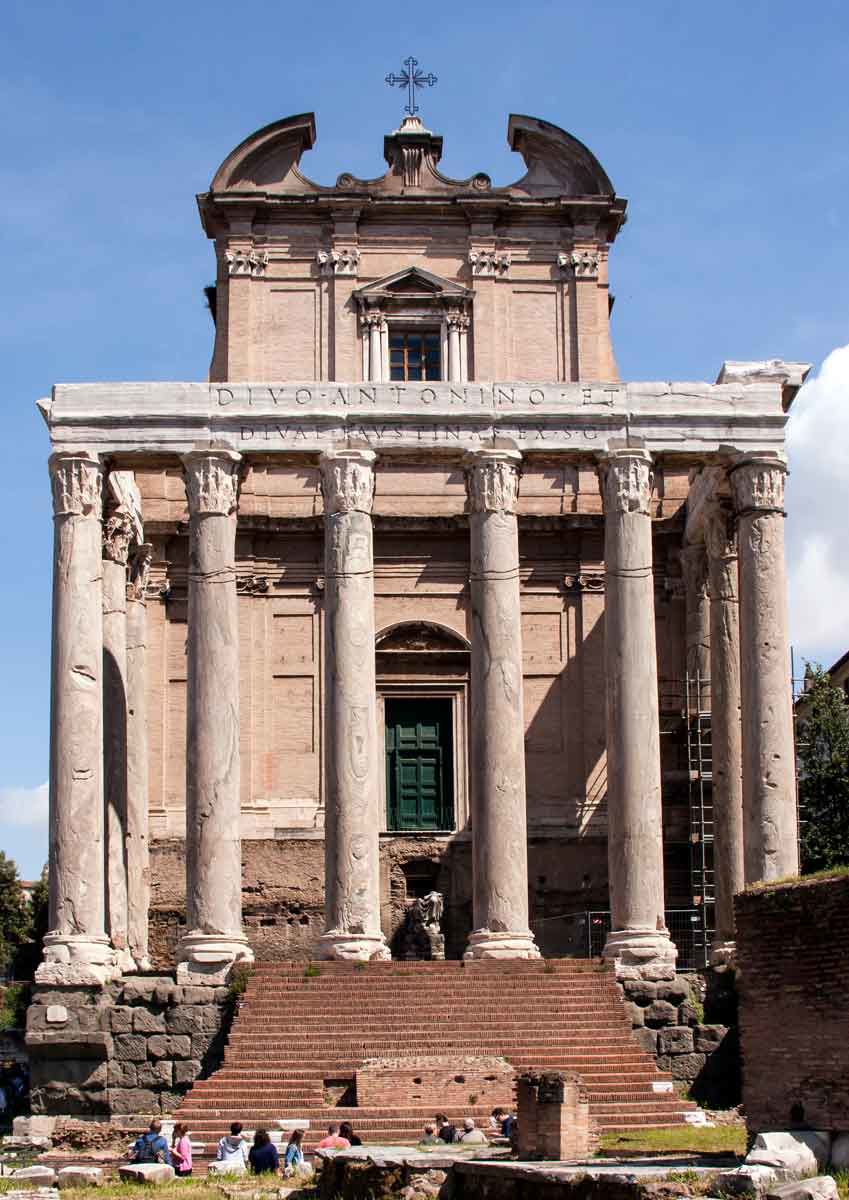
The Roman Forum was the ancient Roman Republic’s social, commercial, and political nerve center. This sprawling complex of ruins is home to some of Ancient Rome’s most significant buildings, including the Temple of Saturn, the Arch of Septimius Severus, and the Curia Julia.
The Forum remained an area of significance during the heyday of the Roman Empire. For example, it came to house important imperial temples. Emperor Antonius Pius dedicated a temple to his late deified wife, Empress Faustina. Author and photographer Steven Brooke says the Roman Senate rededicated the temple to Antoninus Pius and Faustina upon the emperor’s death in 161 CE.
In the eleventh century, Brooke points out that the temple was converted into the church of San Lorenzo in Miranda.
3. Ara Pacis Augustae
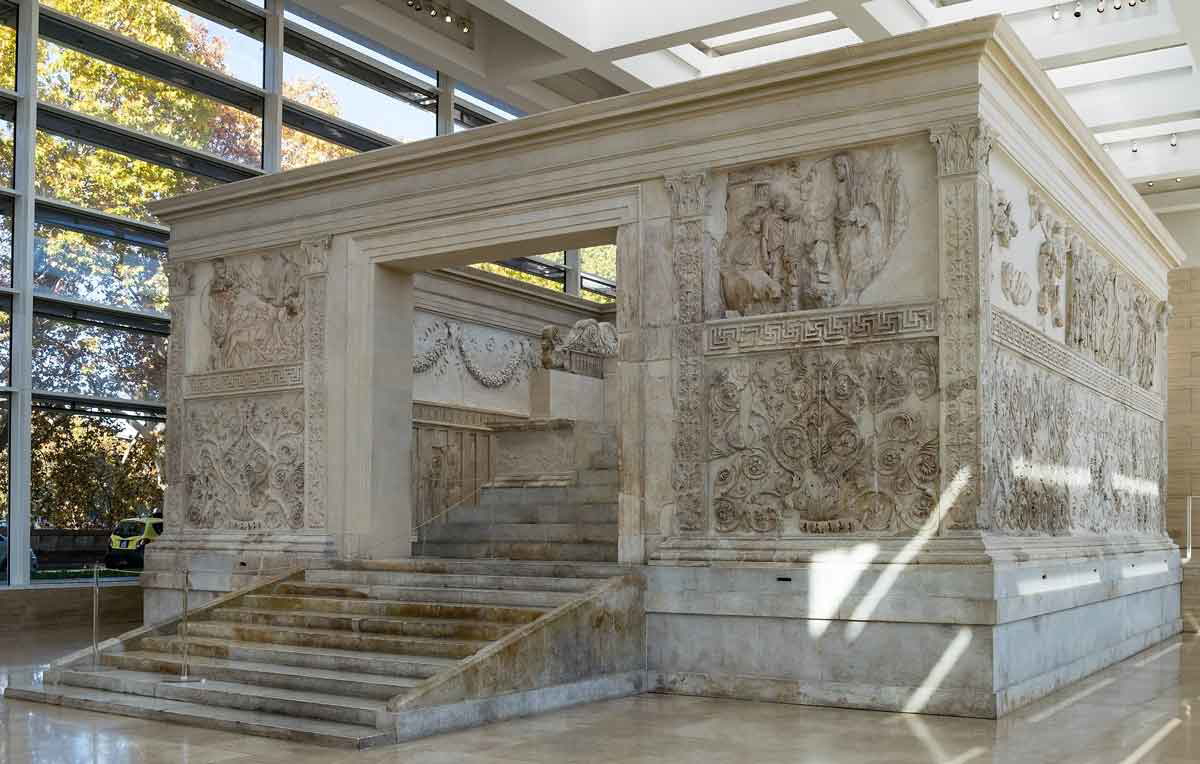
Augustus solidified his authority and Rome’s place as the dominant Mediterranean imperial power. Commissioned by the Roman Senate in 13 BCE, the altar known as the Ara Pacis Augustae or Altar of Augustan Peace was completed in 9 BCE. The altar symbolizes the period of Rome’s prosperity, known as the Pax Romana.
The Ara Pacis garnered much attention during Mussolini’s fascist regime in the 1920s and 1930s. Indeed, as historian R.J.B. Bosworth notes, it became a centerpiece of regime propaganda linking Mussolini to the legacies of Roman emperors like Augustus. In 2006, the Ara Pacis was installed in a new purpose-built museum near the banks of the Tiber River and across from the Mausoleum of Augustus.
4. The Colosseum

Emperor Titus inaugurated Rome’s legendary arena, the Colosseum, in 80 CE. Construction of this nearly 2,000-year-old arena began under Titus’ father and predecessor, Emperor Vespasian.
Although associated with the zenith of the Roman Empire, the Colosseum’s history reflects Rome’s layered past. For example, historian R.J.B. Bosworth explains that the Colosseum experienced centuries of multipurpose usage and neglect. For instance, Bosworth notes that the outer arches stored manure until the early nineteenth century.
Moreover, after the collapse of the Roman Empire, the Colosseum went from hosting gladiatorial combat and other spectacles to being a quarry and a fortress for powerful Roman families.
The Colosseum has long shed these less glamorous uses and is one of Italy’s premier tourist attractions.
5. The Pantheon
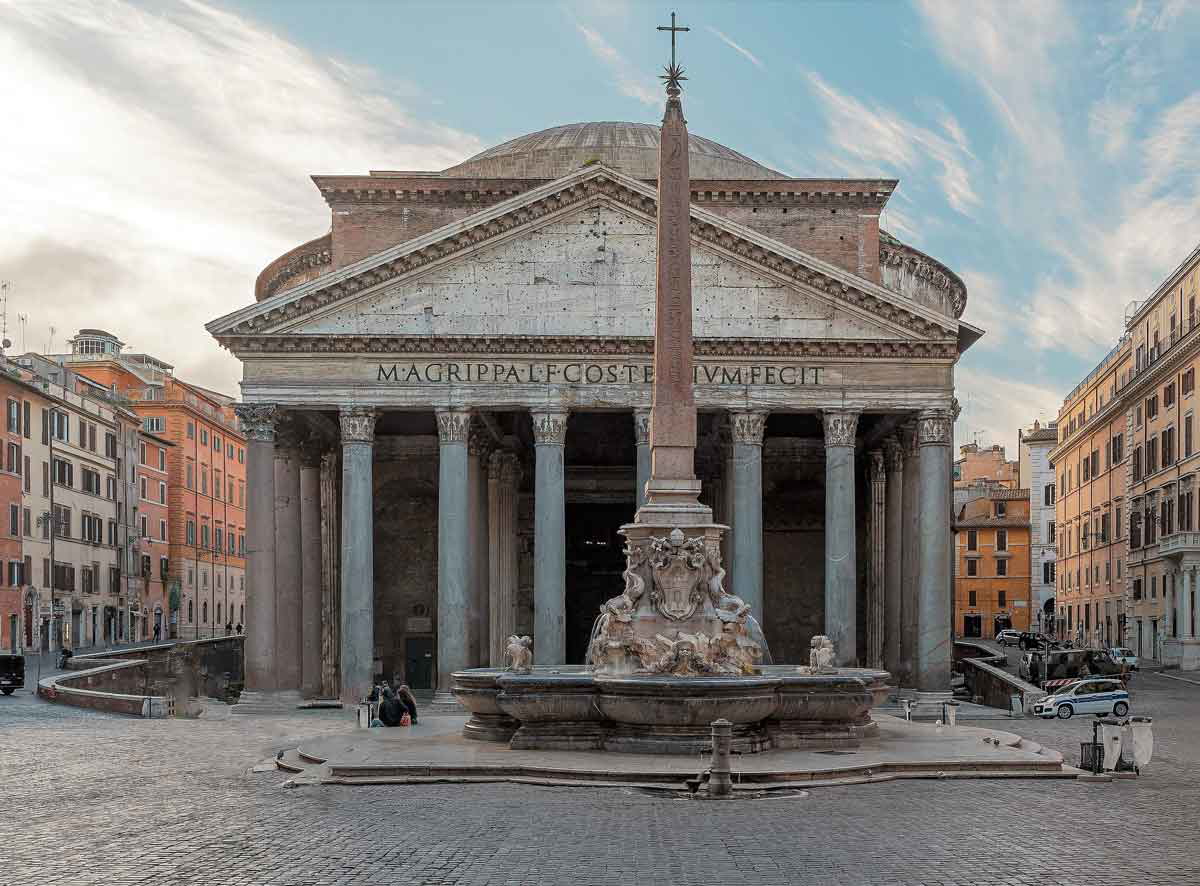
The Pantheon is a marvel of ancient engineering and architecture. Its ambitious design continues to inspire architects to this day. Stephen Brooke notes that many scholars believe the Pantheon to be the best preserved ancient Roman monument. Marcus Agrippa oversaw the construction of the original temple.
After the original structure was damaged by a fire, Emperor Hadrian rebuilt the Pantheon. Hadrian kept the original inscription bearing Agrippa’s name. Historian Christopher Kelly notes that Hadrian’s other famous building project in Rome, his mausoleum, later became the Castel Sant’Angelo.
The Pantheon became a Roman Catholic church in 609 CE. It contains the tombs of two Italian monarchs and the Renaissance artist Raphael.
6. Basilica of St. John in Lateran
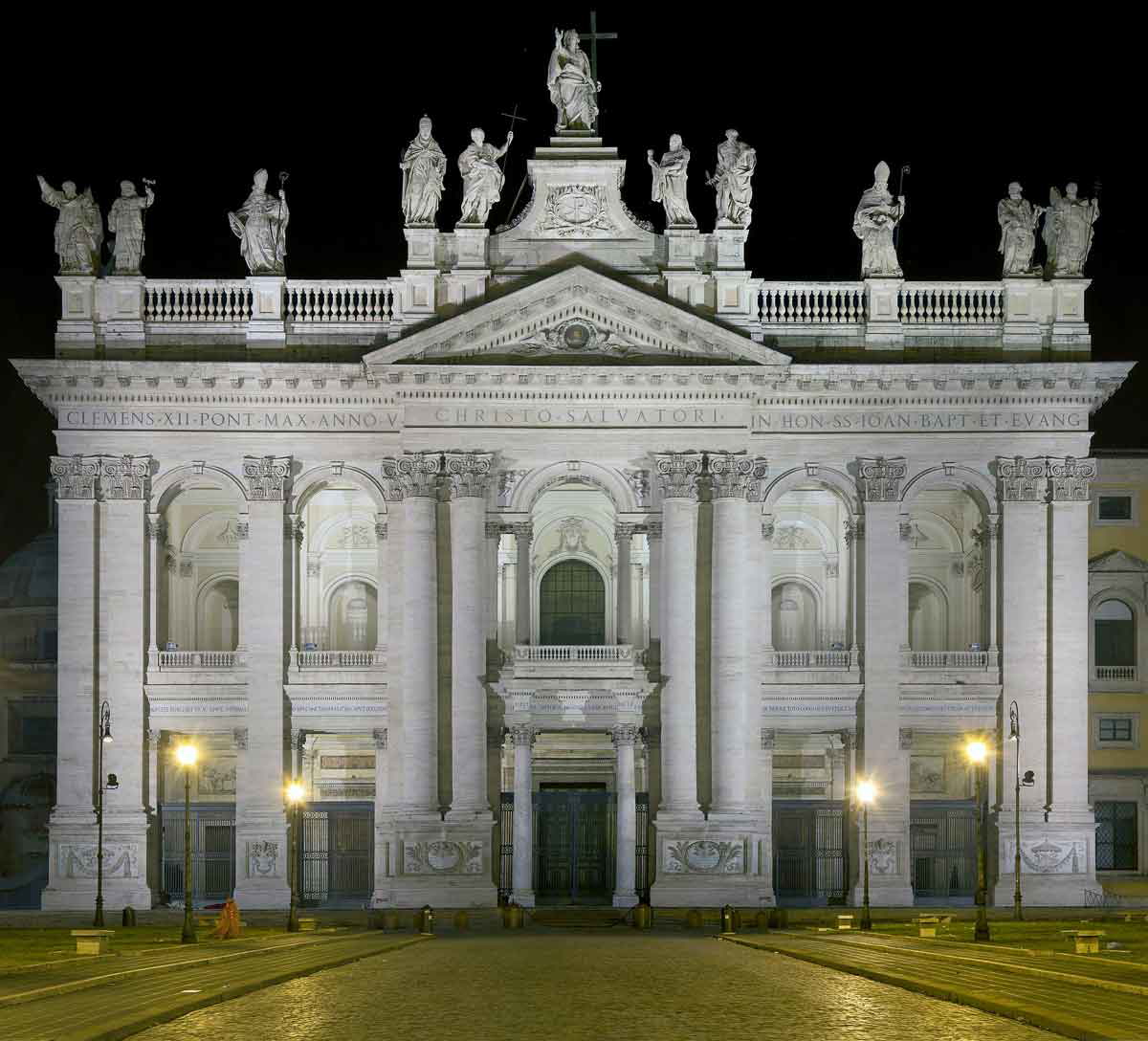
The Basilica of St. John in Lateran is the official ecclesiastical seat of the Bishop of Rome (the pope). It is the oldest and most important basilica in Rome.
Initially commissioned by Emperor Constantine in the 4th century, St. John in Lateran has undergone several reconstructions and renovations over the centuries. For example, Stephen Brooke notes that the present façade dates to the eighteenth century.
7. St. Peter’s Basilica & Vatican City
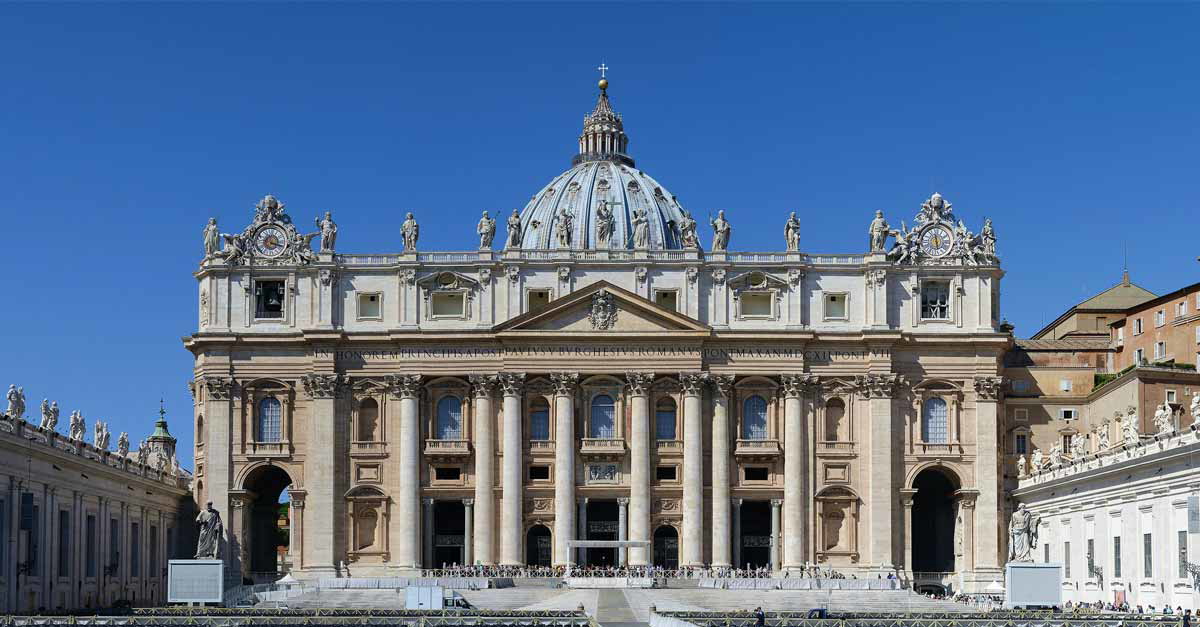
A sovereign state since early 1929, Vatican City is the global capital of Roman Catholicism and the world’s smallest country.
St. Peter’s Basilica is a masterpiece of Renaissance architecture built on the site where St. Peter, the first pope, is believed to be buried.
St. Peter’s was consecrated in 1626, following 120 years of construction. By this point, historian David Gilmour notes that Rome had recovered from the devastation unleashed by Holy Roman Emperor Charles V’s army in 1527.
Vatican City is also home to the celebrated Vatican Museums. Initially founded by Pope Julius II in the sixteenth century, successive pontiffs enlarged the massive inventory of one of the world’s great collections of art and antiquities.
8. Porta Pia
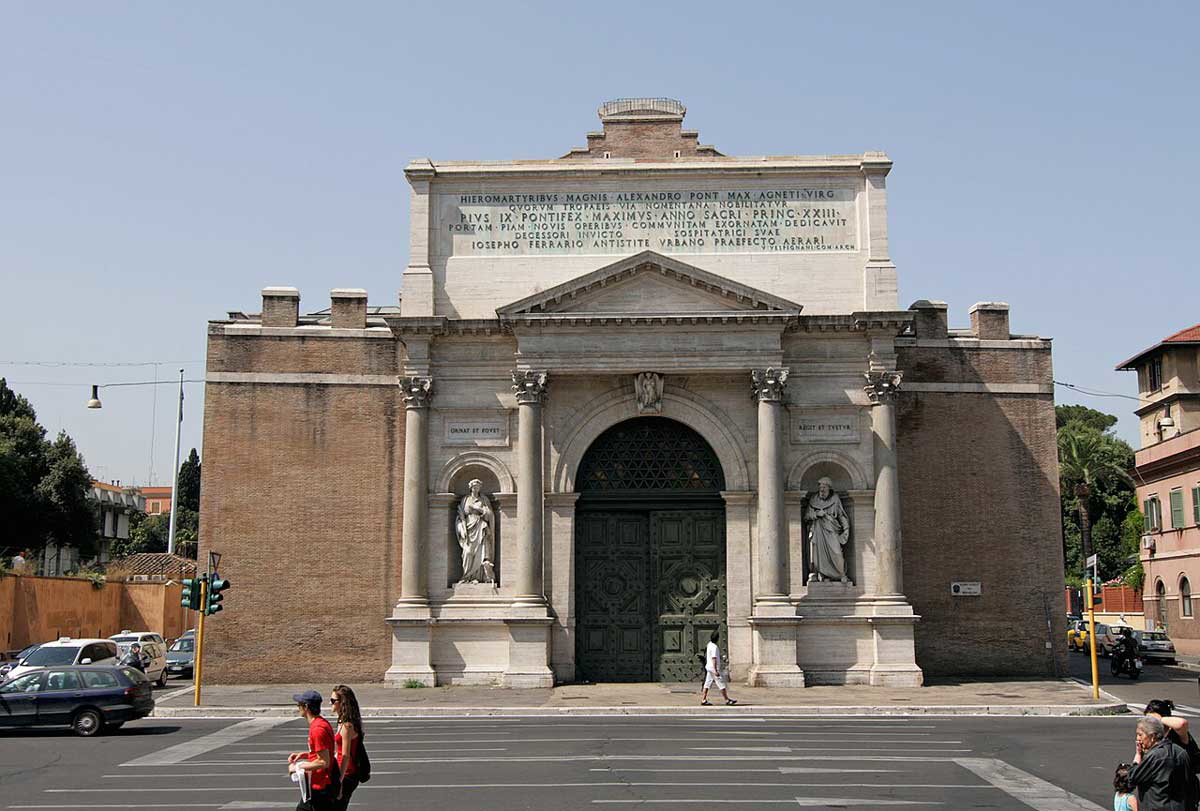
Built in the 16th century by Pope Pius IV, Porta Pia originally served as one of the historic city gates. Stephen Brooke points out that the Porta Pia was Michelangelo’s final architectural project completed during his illustrious career.
However, the Porta Pia is also a monument of national significance in Italy’s history. For example, the gate is best known for its role in the city’s conquest by Italian forces in 1870, which marked the end of the Papal States and the unification of Italy. Historian R.J.B. Bosworth notes that Rome became Italy’s capital city in 1871.
9. Quirinal Palace
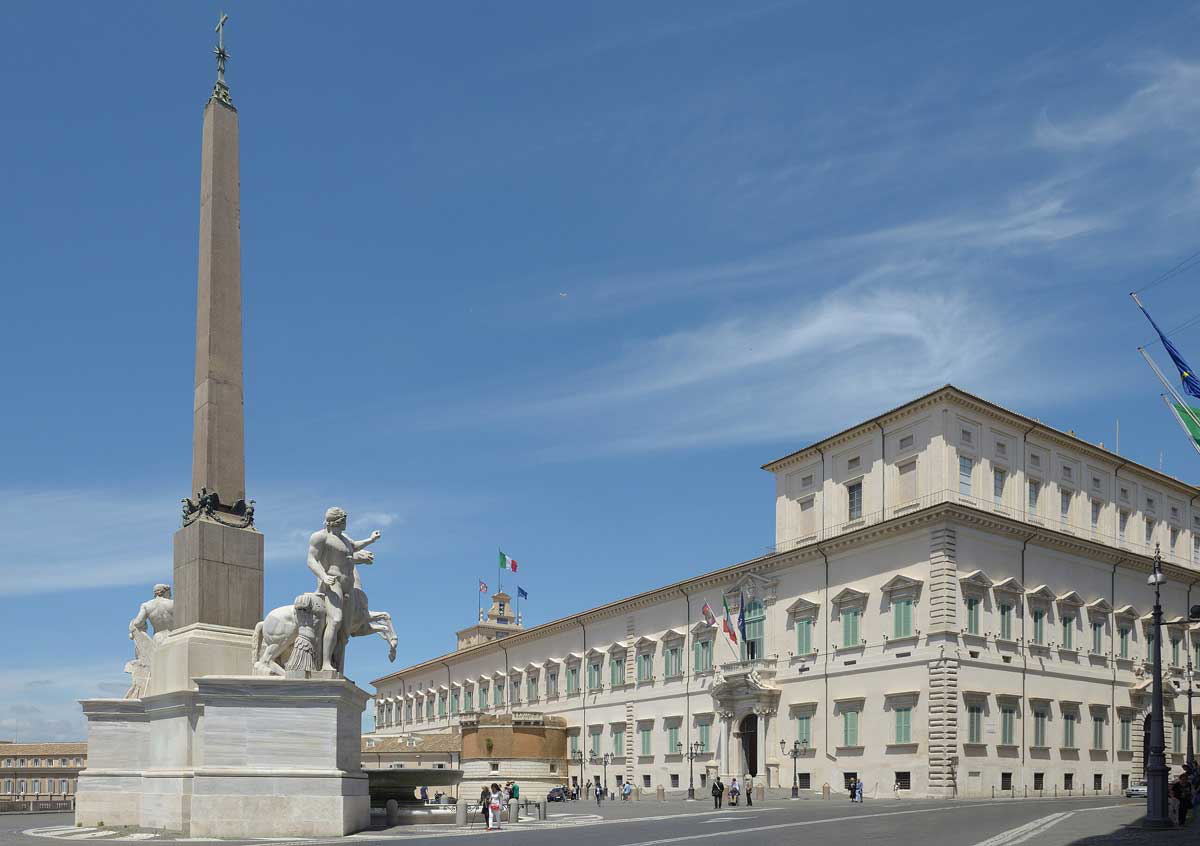
The Quirinal Palace also contains evidence of many layers of Rome’s history. For instance, this sixteenth-century palace is the residence of the president of the Italian Republic. Before Rome’s unification with the Kingdom of Italy in September 1870, the Quirinal Palace was a papal residence for thirty popes.
Before the monarchy’s fall after the Second World War, Italy’s royal family resided at the Quirinal Palace.
Another royal residence, the nearby Villa Ada, played a significant role in fascist dictator Benito Mussolini’s fall from power in July 1943. Historian Giuseppe Finaldi explains that Mussolini was arrested in the villa’s garden.
10. The Vittoriano
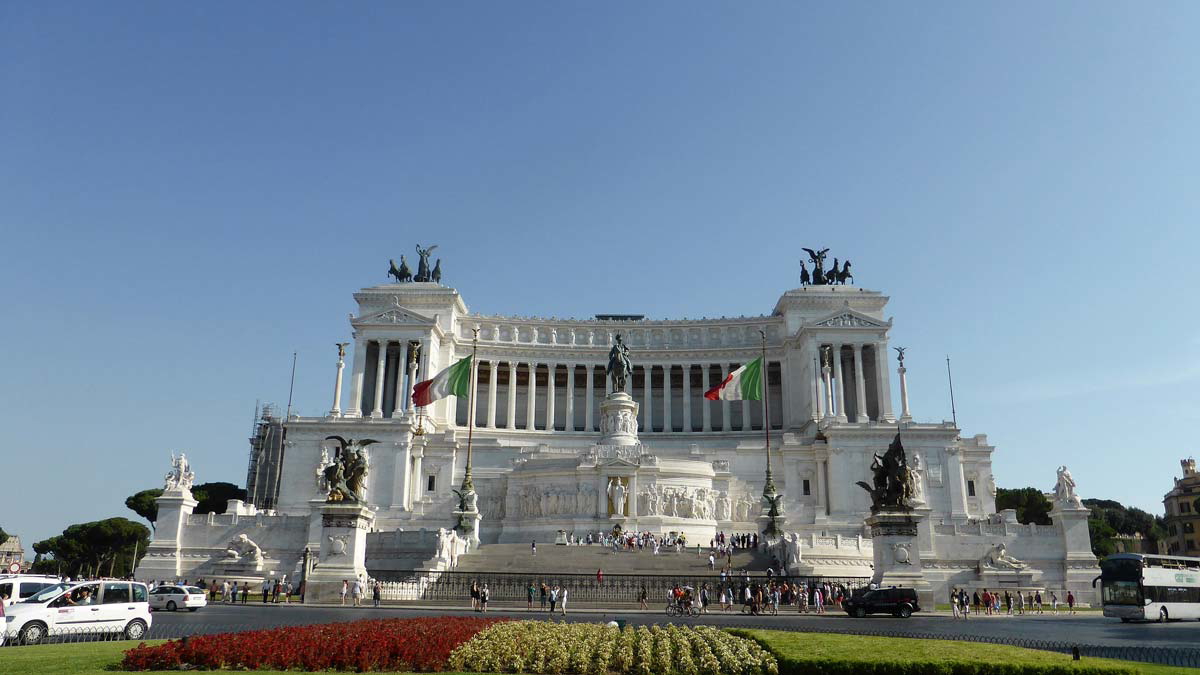
Also known as the Altare della Patria (Altar of the Fatherland), the Vittoriano is a massive marble monument dedicated to Victor Emmanuel II, the first king of unified Italy.
The Vittoriano symbolizes Italian unity and the king’s role in the Risorgimento. As historian David Gilmour notes, the monument was inaugurated in 1911 to celebrate the 50th anniversary of Italian unification.
After WWI, the monumental complex was chosen as the final resting place for Italy’s tomb of the unknown soldier. The complex also houses Rome’s Risorgimento Museum.
11. E.U.R.
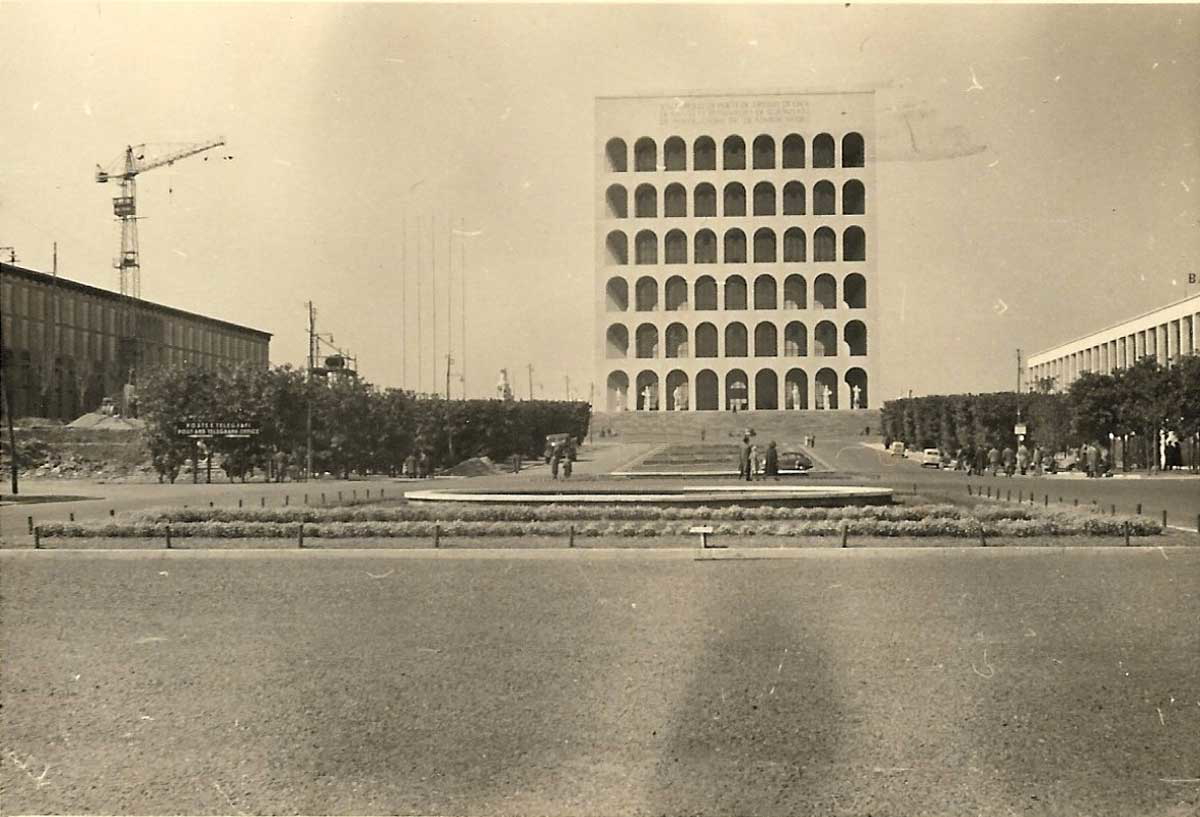
Initially designed in the 1930s, E.U.R. (Esposizione Universale di Roma) was intended to showcase the achievements of fascist Italy. The district was meant to be the centerpiece of a kind of work Olympics planned for 1942.
However, the outbreak of the Second World War in 1939 and Italy’s entry into that conflict in June 1940 canceled the international exhibition. At that point, few of the buildings designed for E.U.R. were completed.
Nevertheless, by the 1950s, E.U.R. began to take shape as a modern and desirable suburb of Rome. Moreover, many of the area’s buildings were designed according to the plans created initially during Mussolini’s rule.
The area’s most recognizable buildings include the Square Colosseum and the Museum of Roman Civilization. Also known as the Palace of Italian Civilization, the Square Colosseum was designed as part of fascist Italy’s building projects to link Mussolini’s regime with the past glories of the Roman Empire. Today, the building serves as the headquarters for the Italian luxury fashion house Fendi.
Mussolini’s regime celebrated the 2,000th anniversary of the birth of Emperor Augustus in the 1930s with a series of projects and exhibitions linking the Roman Empire to fascist Italy’s growing Mediterranean empire. Historian Christopher Kelly points out that the Museum of Roman Civilization was initially designed in the late 1930s as part of this propaganda campaign. The museum opened in 1952 but has been closed for renovations since 2014.
References and Further Reading
Bosworth, R.J.B. (2011). Whispering City: Modern Rome and its Histories. Yale University Press.
Brooke, S. (2000) Views of Rome. Rizzoli.
Finaldi, G. (2008). Mussolini and Italian Fascism. Pearson Longman.
Gilmour, D. (2011). The Pursuit of Italy: A History of a Land, its Regions, and their Peoples. Penguin.
Kelly, C. (2006). The Roman Empire: A Very Short Introduction. Oxford University Press.
